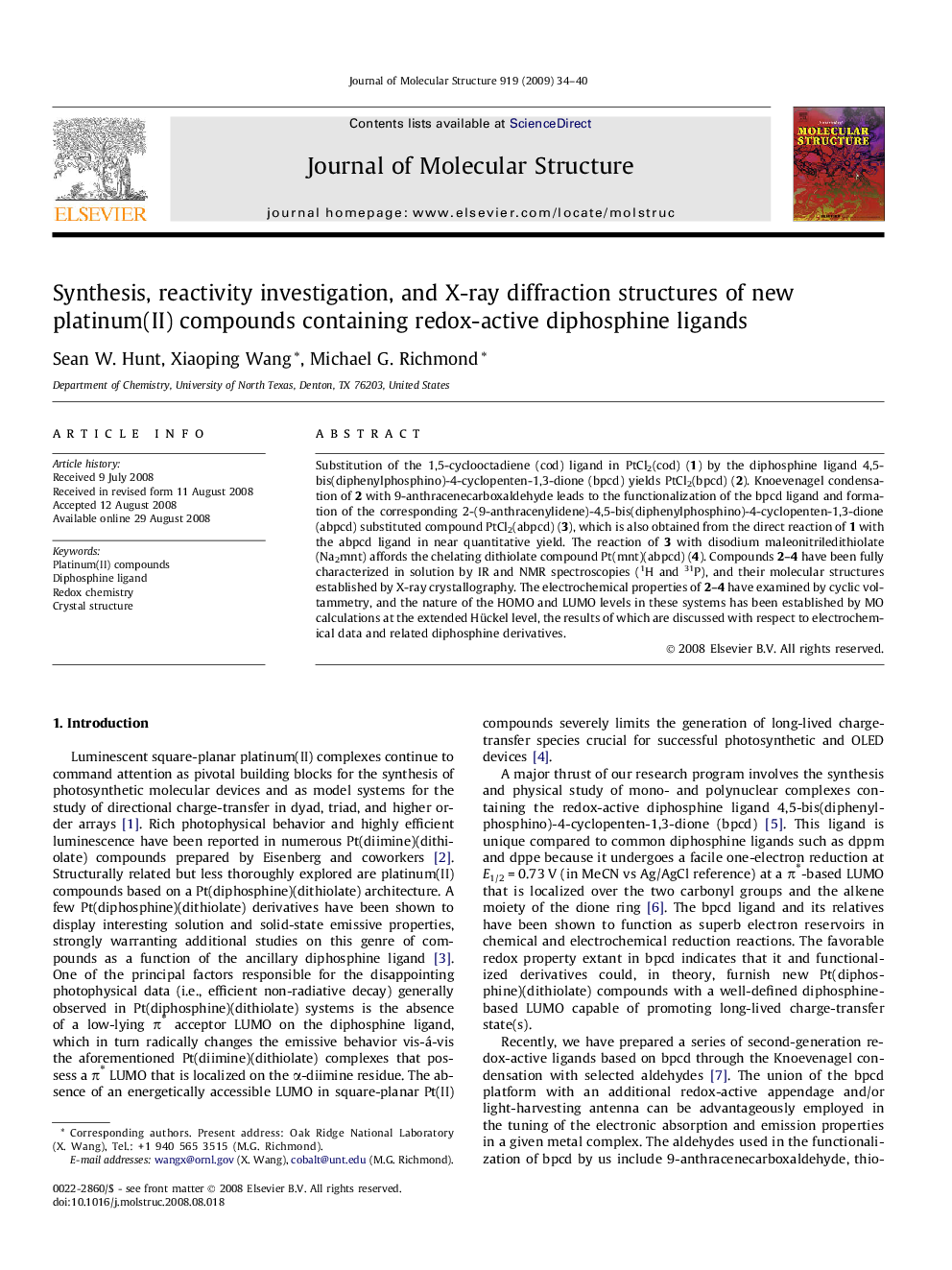| Article ID | Journal | Published Year | Pages | File Type |
|---|---|---|---|---|
| 1410422 | Journal of Molecular Structure | 2009 | 7 Pages |
Abstract
Substitution of the 1,5-cyclooctadiene (cod) ligand in PtCl2(cod) (1) by the diphosphine ligand 4,5-bis(diphenylphosphino)-4-cyclopenten-1,3-dione (bpcd) yields PtCl2(bpcd) (2). Knoevenagel condensation of 2 with 9-anthracenecarboxaldehyde leads to the functionalization of the bpcd ligand and formation of the corresponding 2-(9-anthracenylidene)-4,5-bis(diphenylphosphino)-4-cyclopenten-1,3-dione (abpcd) substituted compound PtCl2(abpcd) (3), which is also obtained from the direct reaction of 1 with the abpcd ligand in near quantitative yield. The reaction of 3 with disodium maleonitriledithiolate (Na2mnt) affords the chelating dithiolate compound Pt(mnt)(abpcd) (4). Compounds 2-4 have been fully characterized in solution by IR and NMR spectroscopies (1H and 31P), and their molecular structures established by X-ray crystallography. The electrochemical properties of 2-4 have examined by cyclic voltammetry, and the nature of the HOMO and LUMO levels in these systems has been established by MO calculations at the extended Hückel level, the results of which are discussed with respect to electrochemical data and related diphosphine derivatives.
Related Topics
Physical Sciences and Engineering
Chemistry
Organic Chemistry
Authors
Sean W. Hunt, Xiaoping Wang, Michael G. Richmond,
